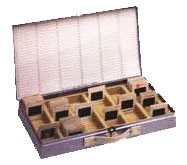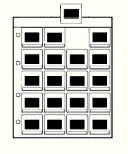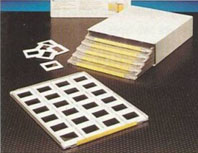 Transparencies are valuable and delicate items that need to be carefully stored if image quality is to be preserved over a long period of time. They will be part of the photographic legacy for many years despite the march of digital imaging. Image libraries and individual photographers store millions of original images in this form, either mounted or as strips of film.
Transparencies are valuable and delicate items that need to be carefully stored if image quality is to be preserved over a long period of time. They will be part of the photographic legacy for many years despite the march of digital imaging. Image libraries and individual photographers store millions of original images in this form, either mounted or as strips of film.
Mounted transparencies should not be glassed and can be stored in:
- transparent plastic sleeves suitable for hanging in a conventional filing system;
- rectangular stacking slide boxes; or
- transparent plastic journals that open like books.
Each of these systems has its own advantages and disadvantages. Plastic sleeves are very practical and provide high-density storage with convenient access and viewing. Slide boxes offer additional protection and high-density storage, particularly when two unglassed slides are stored in each slot. However, accessibility is less convenient than with plastic sleeves. The rigid plastic storage journals are perhaps the best all-round solution. They provide good physical protection, convenient access and viewing, and reasonably high-density storage. The journals can be stacked like books onto shelves and conveniently labelled. The only disadvantage of the system is that it is relatively expensive.
 Unmounted transparencies are usually cut into standard lengths of 4 - 6 images, and stored in pages containing a number of sleeves. These may be obtained in various transparent plastic and paper materials, and are reasonably convenient to store either in hanging files or ring-binder folders. Most pages can be removed and placed directly onto a light-box for viewing. Pages of these types offer limited physical protection, and must be handled carefully to avoid scratching film as it is inserted and removed.
Unmounted transparencies are usually cut into standard lengths of 4 - 6 images, and stored in pages containing a number of sleeves. These may be obtained in various transparent plastic and paper materials, and are reasonably convenient to store either in hanging files or ring-binder folders. Most pages can be removed and placed directly onto a light-box for viewing. Pages of these types offer limited physical protection, and must be handled carefully to avoid scratching film as it is inserted and removed.






